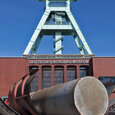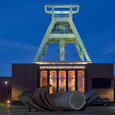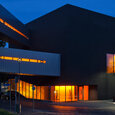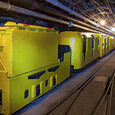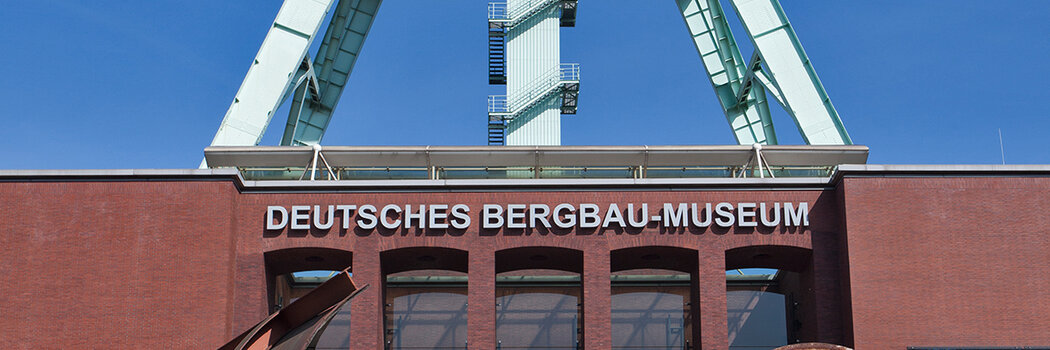
The world's biggest mining museum opts for Fiber To The Office
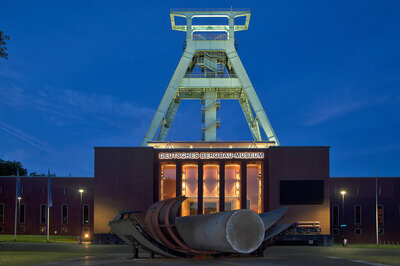
Research and discover
The German Mining Museum in Bochum (DBM) is one of the best-visited museums in Germany and apart from this is a renowned research institute in the field of geological resources. Every year numerous scientists come to the Leibnitz Research Museum to collaborate on interesting projects. This has led to the organic growth of the museum: New buildings and exhibition halls have been added one by one. The central administrative building originates from 1930 and has been expanded with numerous extensions over the years. In order to give due consideration to the historical architecture, while being equipped for future demands, even before the end of the last millennium the decision was made for fiber optic cabling of the building complex. Far-reaching changes are now pending: Renovation of the museum building and restructuring of the permanent exhibition paves the way for the future of the DBM. The central administrative building is also being renovated at the same time. IT director René Schauf seized this opportunity to also put the network infrastructure through its paces.
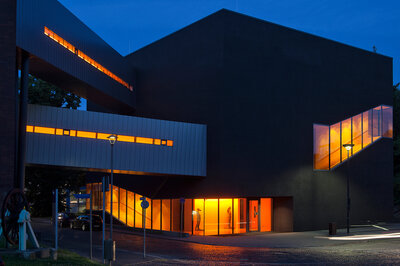
Fast and efficient
In deciding for fiber optics in the administrative building over 15 years ago, the DBM began its investment in direct connection of terminal devices via optical waveguides. It soon transpired that this Fiber To The Desk solution would be too expensive over the long term. The IT staff initially made do with individual external media converters. In 2006, René Schauf's IT department became aware of the Fiber To The Office solution from MICROSENS. Extensive tests and detailed cost calculations soon revealed the advantages of the compact FFTO switches. Ten years on, over 35 first generation systems were in operation, as well as 4th generation installation switches in use in other buildings. When an error occurred, all components could so far be repaired cost-effectively. At the beginning of the millennium, the DBM still relied on copper cabling in new buildings.
Long-term and forward-thinking
In the course of extensive restructuring of the DBM, the various concepts were weighed upagainst each other. Fiber To The Office was persuasive in many respects:
- Insufficient space in historical buildings: Copper cables would require new cable ducts and modern facility technology also competes for space in the cable duct
- FO transmission is not susceptible to interference
- Connection of the sub-distributors to the main distribution unit is always in fiber optic technology
- Larger distances within a building complex can be bridged effortlessly
What was already predictable was also confirmed in direct comparison: The DBM decided strategically for mid-term homogenisation of the IT landscape. In the future, cabling will be installed in all buildings according to the FTTO concept. At the same time, the MICROSENS 1st generation switches in Building 5 will be successively replaced by generation 6 Gigabit Ethernet installation switches. The small, compact systems are easy and quick to fit directly into the cable duct and connect to the network via fiber optics. The terminal devices are connected cost-effectively via RJ-45 standard connections.
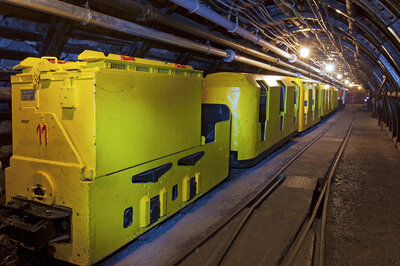
Flexible and predictable
René Schauf is convinced of the solution: "The requirements placed on our IT are changing constantly - the FTTO concept offers us maximum flexibility in the offices. At the same time, the smooth operation of the switches over a ten year period speaks volumes for MICROSENS". Even though extremely high demands arise for the network capacity as part of projects, such as streaming conferences, they can be comfortably met using a direct FO uplink. Moreover, the installation switches can be adapted to new speeds using Small Form-factor Pluggable Interfaces (SFPs). If a new switch is installed in the sub-distributor, it is sufficient to exchange the SFP to use its bandwidth. Conversely, this offers the DBM the chance to successively adapt the network infrastructure. The 78 FO ports in the sub-distributors in Building 5, for instance, can be replaced step by step, such that the costs do not arise en block. Overall, with the combination of glass fiber and copper cabling according to the FTTO concept, the German Mining Museum in Bochum sees itself outstandingly well prepared for the future.
About MICROSENS
Transmitting information via fiber optic connections offers numerous benefits. MICROSENS GmbH & Co. KG recognised this very early on. As one of the pioneers, the company has developed and produced high-performance communications and transmission systems in Germany since 1993. Individually matched to the demands of diverse usage areas and embedded in comprehensive concepts for individual sectors. But, above all, close to the customer. Technical challenges from customer projects are incorporated directly into product development. This way, IP-based automation solutions are created for modern buildings, cost-efficient network concepts for the office and workspace, robust and fail-safe solutions for industrial environments, optical transport systems future-oriented wide area networks and efficient coupling of sites and computer centres.







